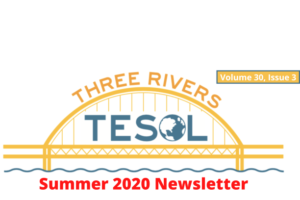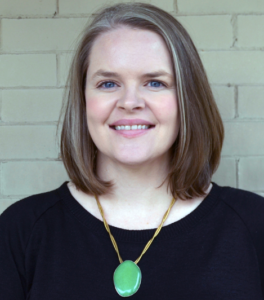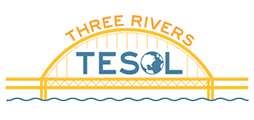 TESOL and Emergent Bilingualism
TESOL and Emergent Bilingualism
by Katharine E. Burns
 One of the most exciting developments in recent years in applied linguistics has been what May (2014) calls the ‘multilingual turn,’ or the idea of moving beyond monolingual orientations in our pedagogical philosophies and practices to support students in using all the linguistic resources they bring to our classrooms. Rather than approaching L2 instruction from the standards of a monolingual speaker of the target language, Turnbull (2018) has called for the reconceptualization of L2 learners as ‘emergent bilinguals,’ arguing that we should treat all L2 learners as if they are (developing) bilinguals and that the translanguaging framework, in which bilinguals are encouraged to use their full linguistic repertoire and not asked to separate their languages, can apply not only to minority language-speaking children, but to any L2 learner. Thus, in the TESOL context, according to Kleyn & García (2019), “Competent English speakers will result when the TESOL field sees students not as ‘second language’ learners and speakers, but when they are allowed from the very beginning to use all their language repertoire to make meaning of the new features, and when they are evaluated not on how these new features are used in comparison with monolingual speakers, but on how these new features are used competently to make meaning, do science, become a historian, be a literary author, teach, or do the myriad things that competent human beings can do” (p. 79).
One of the most exciting developments in recent years in applied linguistics has been what May (2014) calls the ‘multilingual turn,’ or the idea of moving beyond monolingual orientations in our pedagogical philosophies and practices to support students in using all the linguistic resources they bring to our classrooms. Rather than approaching L2 instruction from the standards of a monolingual speaker of the target language, Turnbull (2018) has called for the reconceptualization of L2 learners as ‘emergent bilinguals,’ arguing that we should treat all L2 learners as if they are (developing) bilinguals and that the translanguaging framework, in which bilinguals are encouraged to use their full linguistic repertoire and not asked to separate their languages, can apply not only to minority language-speaking children, but to any L2 learner. Thus, in the TESOL context, according to Kleyn & García (2019), “Competent English speakers will result when the TESOL field sees students not as ‘second language’ learners and speakers, but when they are allowed from the very beginning to use all their language repertoire to make meaning of the new features, and when they are evaluated not on how these new features are used in comparison with monolingual speakers, but on how these new features are used competently to make meaning, do science, become a historian, be a literary author, teach, or do the myriad things that competent human beings can do” (p. 79).
What are some ways that we can more fully embrace our TESOL students as emergent bilinguals and utilize their existing language repertoires as a resource as we support them in expanding those language repertoires? Kleyn & García (2019) emphasize that additive, translingual approaches to TESOL must stem from a classroom culture that supports and validates all student linguistic resources. They suggest that instructors begin by inquiring about students’ home language backgrounds and practices and they discuss the importance of a classroom linguistic landscape that is inclusive and does not send the message that only English is privileged in the space. This will help to set the tone for a ‘multilingual ecology’ in the classroom that may also include audio, video, print materials, and other resources in students’ languages (García, Johnson, & Seltzer, 2017). When considering pedagogical objectives for a syllabus, unit, or lesson, instructors might consider what García et al. (2017) call ‘general linguistic performance objectives’ (related to what students will be able to do, using their entire linguistic repertoires to express complex ideas and understand new concepts) and their ‘language-specific performance objectives’ (related to grammar, usage, vocabulary in the target language). The latter can be differentiated for learners at different levels of the target language. Instructors also have a wealth of opportunities to engage in translanguaging shifts on a moment-by-moment basis in which they encourage students to utilize the resources of their additional languages in service of the greater lesson objectives (García et al., 2017). Students may also draw on shared linguistic resources, from any language, to negotiate meaning and create a product for presentation to the rest of the class in English.
May (2014), who calls for more additive approaches to TESOL pedagogies, highlights the example of the LEAP (Language the Achievement of Pasifika) resource from the New Zealand Ministry of Education. LEAP is a research-based, interactive online resource that promotes an additive approach to bilingual education. Though it was developed for children who speak Pasifika languages in New Zealand’s schools and are emergent users of English, the tools may be applied to other TESOL and L2 instruction contexts. You can access LEAP at: https://pasifika.tki.org.nz/LEAP
The future of TESOL may be increasingly multilingual, and that change might start with a shift in mindset. After all, if the goal of TESOL and SLA is to produce bilinguals, why not meet students where they are, as emergent bilinguals, from the start?
Sources
García, O., Ibarra Johnson, S., & Seltzer, K. (2017). The translanguaging classroom: leveraging student bilingualism for learning. Philadelphia: Calson.
Kleyn, T. & García, O. (2019). Translanguaging as an act of transformation: restructuring teaching and learning for emergent bilingual students. In L. C. de Oliveira (Ed.), The handbook of TESOL in K-12 (pp. 69-82). Wiley Blackwell.
May, S. (2014). The multilingual turn: implications for SLA, TESOL and bilingual education. New York: Routledge.
Turnbull, B. (2018). Reframing foreign language learning as bilingual education: epistemological changes towards the emergent bilingual. International Journal of Bilingual Education and Bilingualism, 21(8), 1041–1048.
Katharine E. Burns is an Assistant Professor of Second Language Acquisition and Hispanic Studies at Carnegie Mellon University (keburns@andrew.cmu.edu).
Next article: 2020 TESOL Virtual Advocacy and Policy Summit
